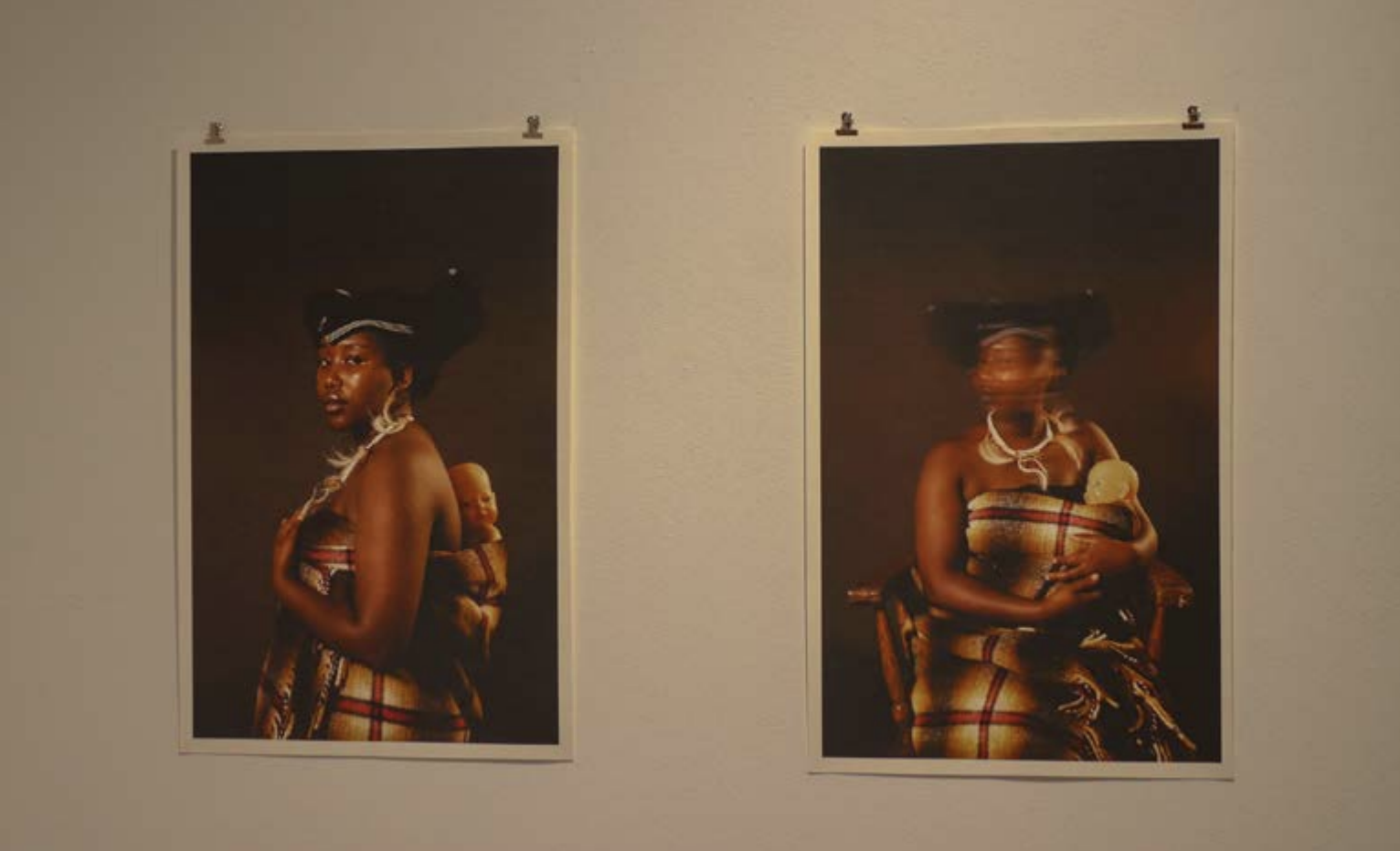By Bukamuso Sebata
Walking down Somerset, with its collection of coffee shops and craft stalls, it might be easy to miss the Rhodes School of Fine Art, home to various exhibitions at this year’s Festival.
Inside, exhibitions range from mixed media works grappling with mental health in novel ways, to thoughtful engagements with history and identity through photography and raw materials. The below three bodies of work stand out.
It’s an African Proverb, a Biomythography
If you’re looking for an exhibition that seamlessly blends the human psyche with African oral traditions, then It’s an African Proverb, a Biomythography by N’lamwai Chithambo is a must-see. The exhibition draws on the comic book genre, using paint on cardboard to explore figuration outside the conventional frame. Chitambo’s works tell the story of a young man grappling with his mental health. It offers a unique autobiographical perspective, infused with the richness of African oral tradition.
Chithambo skilfully weaves together the young man’s struggles, his conversations with his father, and the profound impact of his own mental health journey. By employing the biomythography approach, which combines life experiences, storytelling, and myth – the artist creates a deeply personal and thought-provoking narrative that leaves a lasting impression.
It’s an African Proverb, a Biomythography offers a meaningful and sincere exploration of mental health, artfully blending personal introspection with cultural heritage.
Out of the Ruins, Out from the Wreckage
Also on exhibition is Namibian sculptor Wil-Merie Grevling’s Out of the Ruins, Out from the Wreckage. It brings forth an extraordinary body of work that transports you to the heart of the Namibian landscape. In an awe-inspiring feat, Greyling transported 1.8 tons of salt material from the mines of Namibia to her studio in Makhanda, South Africa. This endeavour serves as the foundation for her exploration of transformation, value, and vulnerability. Through her skilled craftsmanship, she moulds and carves the salt blocks to allow for an embodiment of the complexity and beauty of the Namibian landscape.
As you immerse yourself in the exhibition, you’ll encounter dense carved Namibian salt blocks, delicate salt crystallization on archival photographs, and air plants – all forming a powerful meditation on collective trauma. You may be drawn to the photograph of miners transporting salt blocks. The aging picture creates a sense that this ritual has passed down from generation to generation, connecting ancient family bonds with the present.
Greyling’s artistic vision extends beyond the physicality of the medium. By harnessing the seemingly contradictory nature of salt – its physical strength and fragility – she invites viewers to reflect on the intimate connection between human transformation and the metaphoric characteristics of this remarkable material. The exhibition serves as a deeply personal journey for Greyling, as she contemplates themes of grief, loss, and spiritual growth intricately intertwined with the Namibian landscape.
Vuleka Mhlaba Ndingene
Finally, if you’re looking for a deeply introspective and thought-provoking journey, Viwe Madinda’s exhibition Vuleka Mhlaba Ndingene, is for you. Through captivating photography, the artist delves into the complex nature of ‘the self’, exploring how internal conflicts shape our perception of reality. The body of work is an exploration of cultural and social topics relevant to the community of Makhanda, as well as the lingering effects of racial segregation. However, it soon becomes clear that it’s something more; an exploration of the proverb umuntu ngumuntu ngabantu, which emphasises the balance between people, nature, and the cosmos.
Through meticulous research and a creative process spanning various philosophies and epistemologies, the artist seeks a deeper understanding of wisdom. The symbolism employed in the artworks serves as a powerful representation of the interconnectedness between the external reality of an individual and their internal world. Each piece becomes a reflection of the self, mirroring the complexities and nuances that make up the whole. A central theme explored in Vuleka Mhlaba Ndingene is the act of self-love – an essential teaching of Ubuntu, which emphasises self-acceptance and self-respect.
An enchanting image is that of a young black woman with a doll on her back. It portrays a woman at peace with herself. This image is contradicted by its neighbour; a blurry image of the woman’s face. The indistinctness symbolises internal conflicts within the self.
The full programme of exhibitions is available on the National Arts Festival website.


